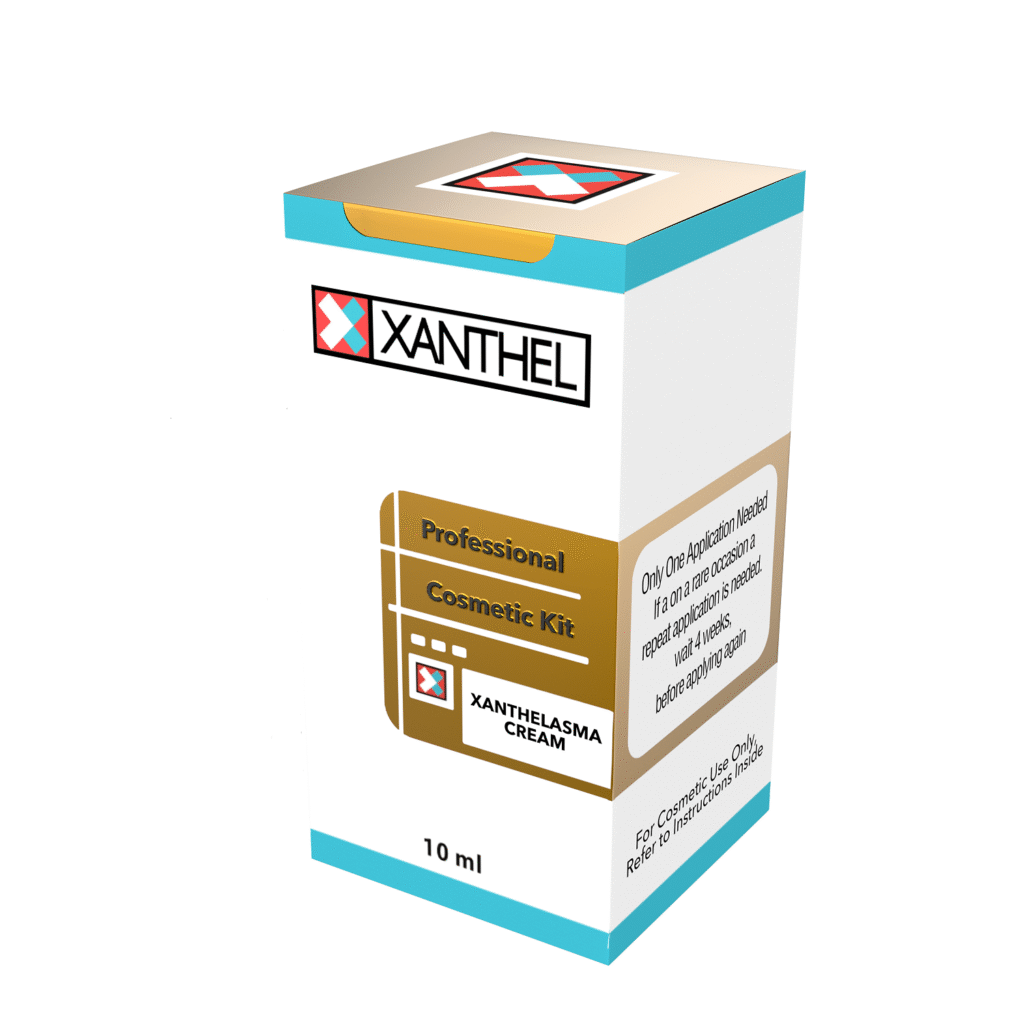Xanthelasma and Insurance Coverage
Xanthelasma are distinctive yellowish deposits that form on your eyelids, and they are primarily composed of cholesterol. While these growths can be a cosmetic concern, they may also be an indicator of an underlying health issue, such as high cholesterol or a lipid metabolism disorder.
Main Causes of Xanthelasma:
– High levels of LDL cholesterol or low levels of HDL cholesterol
– Liver disease that affects your cholesterol levels
– Certain genetic factors that may predispose you to xanthelasma
Common Symptoms of Xanthelasma:
– Yellow patches on the upper or lower eyelids
– Soft to the touch and usually painless
– A tendency to grow larger over time without treatment
– No direct impact on vision, but can cause psychological distress due to aesthetics
Insurance Coverage for Xanthelasma Removal: General Policies
When it comes to xanthelasma removal, insurance coverage can be a grey area. Typically, if the removal is purely for cosmetic reasons, it may not be covered by insurance. However, if it is deemed medically necessary, your provider may offer some coverage options.
Considerations that might deem removal medically necessary:
– If xanthelasma obstructs your vision
– If they cause discomfort and interfere with eye functionality
– Presence of an associated medical condition that requires control, such as dyslipidemia
Typical Steps to Determine Insurance Coverage:
– Schedule an appointment with a specialist for an assessment
– Provider must document the medical necessity of the procedure
– Obtain a pre-authorization from your insurance company to confirm what portion, if any, is covered
Keep in Mind:
– Every insurance policy is different, and coverage can vary greatly
– Some insurance providers may require proof of failure of other treatment options before authorizing removal procedures
– Out-of-pocket costs such as deductibles, co-pays, or co-insurance may apply even if the procedure is covered

Xanthelasma as a Cosmetic Condition
Xanthelasma, those yellow fat deposits around your eyes, might not be harmful to your physical health, but they can certainly impact your appearance and, subsequently, your well-being. Khan Eyelid & Facial Plastic Surgery offers a way to address these concerns.
Cosmetic vs. Medical Procedures: Why Xanthelasma is Rarely Covered
As you consider xanthelasma removal, it’s essential to understand the distinction between cosmetic and medical procedures because it influences insurance coverage:
– Cosmetic Procedures: Typically aimed at improving appearance. Xanthelasma removal is often placed in this category unless the deposits interfere with vision.
– Medical Procedures: Focused on resolving health issues, not only improving aesthetics. If xanthelasma led to issues like vision obstruction, it might be categorized differently.
– Insurance Coverage: Many insurance plans do not cover procedures deemed cosmetic, which often includes xanthelasma removal.
What does this mean for you? You’ll likely be responsible for the costs of treatment since xanthelasma removal is generally not deemed medically necessary. Ensure you’re informed about the potential financial commitment before proceeding.
The Stigma and Psychological Effects of Xanthelasma on Patients
The presence of xanthelasma can be more than just a cosmetic annoyance. Its impact on your self-esteem and social interactions should not be underestimated:
– Perception of Aging: Xanthelasma can make individuals feel they appear older than they are, which might affect self-perception.
– Social Stigma: Unfortunately, any visible deviation from the ‘norm’ can sometimes lead to stigma or unwanted attention.
– Psychological Toll: Prolonged concern with one’s appearance can lead to stress, anxiety, or depression.
Positive Aspect: The removal of xanthelasma can significantly improve quality of life by enhancing self-confidence and social interactions.
To Summarize: If you’re battling with the appearance of xanthelasma on your eyelids, remember you’re not alone. While insurance may not assist with the costs, addressing these deposits can have far-reaching benefits for your mental health and social well-being.

Criteria for Medical Necessity and Insurance Coverage
Understanding Eligibility for Xanthelasma Removal Coverage
As you navigate the complexities of insurance and the xanthelasma removal process, understanding the criteria for medical necessity is crucial. If you’re experiencing symptoms beyond cosmetic concerns, your treatment may qualify for insurance coverage under certain conditions:
– Vision Impairment: Should your xanthelasma impede your field of vision, this could be considered medically essential to treat.
– Eye Function: In cases where xanthelasma affects the eyelid’s functionality, causing discomfort or other functional problems, it may meet the criteria for medical necessity.
– Documentation and Consultation: It is essential to obtain proper documentation from a healthcare professional to support the medical necessity claim.

When Removal May Be Medically Necessary: Vision Impairment and Eyelid Function
If your xanthelasma is negatively impacting your eye function or vision, you have a stronger case for medical necessity. Here’s what you need to look for:
– Vision Blockage: If the deposits extend over the lash line or cause the lid to droop significantly, thus blocking part of your vision, it could be considered for treatment coverage.
– Eyelid Dysfunction: Swelling or heaviness due to xanthelasma that alters your eyelid’s natural movement might qualify for medically necessary removal.
– Symptomatic Discomfort: Physical irritation or symptoms such as dryness or tearing related to the presence of xanthelasma can also be factors supporting medical necessity.
A thorough examination can help ascertain the extent to which xanthelasma affects the functional aspects of your eyelids or vision.
Insurance Approval Process: Documenting Xanthelasma’s Medical Impact
Achieving insurance approval for xanthelasma removal can be a meticulous process. Here is what you need to focus on:
– Medical Records: Gather all relevant documents that detail how xanthelasma impairs your vision or eyelid function.
– Visual Field Testing: This test can objectively show if and how the xanthelasma blocks your vision, providing crucial evidence for insurers.
– Specialist Referrals: A referral from an ophthalmologist or dermatologist highlighting the need for removal can add weight to your case.
– Insurance Correspondence: Engage with your insurance provider early on, providing them with the necessary paperwork and following up regularly regarding the status of your claim.
Options for Xanthelasma Removal
Non-Surgical Alternatives: Assessing Effectiveness and Coverage
While surgical options are popular for xanthelasma removal, non-surgical alternatives may also be considered depending on your individual case and preferences. These options could include:
– Topical Medications: Certain creams or gels may be prescribed to attempt to slow the spread of xanthelasma, but their effectiveness can be limited.
– Xanthel ® Removal Cream: One time treatment that shrivels and removes the xanthelasma. Skin is left to heal back to its natural state.
– Lifestyle Changes: Improving diet, controlling cholesterol levels, and other health adjustments might be recommended as supplementary measures.
For non-surgical treatments, consider the following:
– Affordable: Unlike surgery, non-surgical methods are a lot more price efficient.
– Lower Risk: These alternatives frequently present fewer risks compared to invasive procedures.
– Insurance Considerations: While most insurance plans won’t cover surgical removal due to its cosmetic nature, some non-surgical treatments might be partially covered if they are deemed medically necessary.
Remember, while these alternatives may sound appealing, they may not offer the same level of effectiveness as surgical removal. It’s essential to have a detailed discussion with your healthcare provider about the anticipated outcomes and potential limitations of non-surgical treatments to ensure they align with your expectations and desired results.
The Costs of Removal Without Insurance
Estimating the Costs of Xanthelasma Removal Procedures
As you contemplate xanthelasma removal, understanding the financial aspect is just as important as knowing the medical details. When considering the cost without insurance, it’s vital to recognize that these figures can vary depending on several factors:
– Physician Expertise: More experienced surgeons or specialists may charge higher fees for their services.
– Surgical Technique: Different methods of removal may have different associated costs. Scissors excision might be less expensive compared to high-tech methods like Waterlase.
– Facility Costs: The location where the procedure is performed could also influence the overall price tag.
– Additional Expenses: Remember to account for any pre-surgery consultations, anesthesia, post-surgery follow-ups, and potential medication costs.
As a benchmark, xanthelasma removal can range from a few hundred to a few thousand dollars per session.

Medicare and Xanthelasma Removal
As you consider your options for xanthelasma removal, it’s important to understand what kind of coverage you might expect from your insurance plan, particularly Medicare. Here, we’ll delve into specific details pertaining to Medicare’s policies on procedures like xanthelasma removal, assisting you in making a more informed decision regarding your treatment pathway.
Medicare Coverage Details for Benign Skin Lesions
Medicare’s coverage for skin-related procedures, including the removal of benign lesions like xanthelasma, is subject to specific criteria. As a federally managed health insurance program, Medicare primarily provides coverage to individuals who are 65 or older, as well as to younger people with disabilities or certain diseases. Here’s what you should know about Medicare and xanthelasma removal:
– Medically Necessary Procedures: Medicare Part B may cover procedures that are deemed medically necessary by a healthcare professional. This would typically include treatments and surgeries required to diagnose or treat a medical condition.
– Cosmetic vs. Medical: If xanthelasma removal is considered purely cosmetic, Medicare coverage is unlikely to apply. However, if your healthcare provider can establish that the procedure is required to address a medical issue—for instance, if the deposits are obstructing vision—Medicare may cover some or all of the costs.
– Deductibles and Copayments: Should your xanthelasma removal qualify for coverage, you would still be responsible for Medicare Part B deductibles and copayments. It’s essential to factor these potential out-of-pocket costs into your financial planning for the procedure.
– Prior Authorization: In some cases, Medicare may require prior authorization before agreeing to cover a procedure. Ensure that all necessary paperwork and approvals are in place before scheduling your treatment.
Understanding the Exclusions and Limitations in Medicare Policies
It’s equally crucial to know what Medicare does not cover. By acknowledging the limitations of your coverage, you can avoid unexpected bills and make an informed choice about how to proceed with your xanthelasma treatment.
– Strict Criteria for Coverage: Medicare has stringent rules regarding what constitutes “medically necessary” treatment. Be prepared for the possibility that your xanthelasma removal might not meet these criteria, especially if it’s classified as a non-threatening cosmetic concern.
– Supplemental Insurance: If you have a Medigap (Medicare Supplement Insurance) plan, it may offer additional coverage beyond what Original Medicare provides. These plans might offset some of the out-of-pocket costs associated with procedures that Original Medicare doesn’t fully cover.
– Alternative Payment Options: If Medicare does not cover your xanthelasma removal, consider discussing alternative payment options with your healthcare provider. Some clinics may offer payment plans or have partnerships with financing companies to help manage the costs of uncovered procedures.
Facing the decision to remove xanthelasma can be daunting, but understanding your Medicare coverage and weighing the financial implications can help ensure that you approach the process with clarity and confidence. Always consult with your doctor and insurance provider to receive the most accurate and comprehensive information tailored to your unique situation.

Prevention and Long-Term Management Strategies for Xanthelasma
Preventive measures and long-term management of xanthelasma are pivotal in reducing the chances of recurrence. Here are a few strategies that can be adopted to minimize the risk:
– Manage Cholesterol Levels: Keep your cholesterol levels in the normal range through dietary changes, regular exercise, and medication if necessary. This may lower the chances of xanthelasma returning.
– Routine Follow-Ups: After removal, schedule follow-up appointments with your specialist to monitor your eyelids and manage any early signs of recurrence.
– Healthy Lifestyle: Emphasize a balanced diet, avoid smoking, and maintain a healthy weight to help prevent the formation of new xanthelasma lesions.
– Consider Medications: In some cases, medications that lower lipid levels can be helpful. Speak with your healthcare provider about whether these may be beneficial for you.
In in reflection, while xanthelasma removal can provide a solution for the cosmetic and medical issues related to these lesions, it is crucial to look at the bigger picture, including the management of underlying health conditions and lifestyle factors, to prevent them from recurring. By working closely with your doctor and making healthy choices, you can improve your chances of a successful, long-term outcome.

Summary and Final Recommendations
As you navigate the process of xanthelasma removal, understanding the implications and the possibility of recurrence is vital for achieving the best results. These yellow fat deposits, located in the delicate skin of your eyelids, may resurface if proactive measures aren’t taken. This comprehensive guide will review your insurance policies and suggest a step-by-step approach to treatment, ensuring that you are well-informed and ready to make educated decisions about your health.
Review of Insurance Policies and Coverage Options for Xanthelasma
Before proceeding with xanthelasma removal, it’s important for you to review your insurance policy comprehensively. Coverage for this procedure can vary:
– Review Your Health Insurance Policy: Ensure that your policy includes coverage for xanthelasma removal. In some cases, if the deposits are causing vision obstruction or other medical issues, insurance may cover your treatment.
– Cosmetic vs. Medical Necessity: Differentiate whether your treatment is deemed a cosmetic procedure or a medical necessity, as this will influence coverage. Most insurance plans may not cover treatments considered purely cosmetic.
– Pre-Approval: If the treatment is necessary for medical reasons, obtain pre-approval from your insurance to prevent unexpected costs. Your healthcare provider can assist with the necessary documentation for pre-approval.
– Out-of-Pocket Costs: Understand potential out-of-pocket expenses, including deductibles, co-pays, or coinsurance. Clarifying these beforehand can help avoid financial surprises.
– Alternative Financing Options: In case insurance doesn’t cover the treatment, explore alternative financing options. Many clinics offer payment plans or healthcare financing programs.





